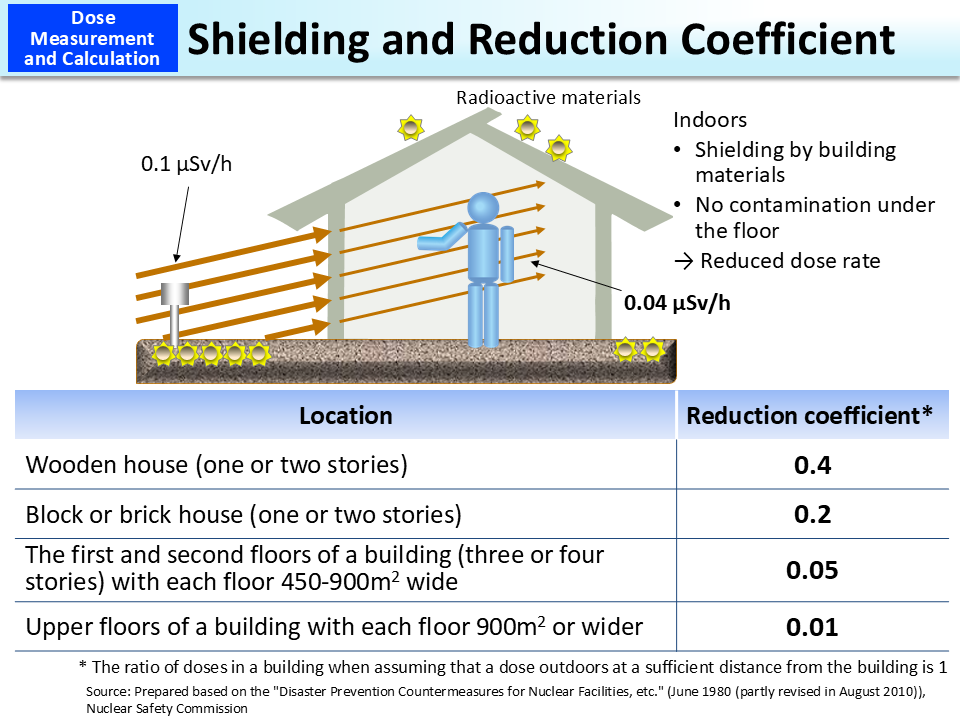Shielding and Reduction Coefficient
In the absence of an appropriate survey meter for measuring ambient dose rates (p.48 of Vol. 1, “Instruments for Measuring External Exposure”), calculations can be made based on the ambient dose rates that the government or local municipalities issued. For the amount of exposure outdoors, measurement results obtained near the relevant building are used. To calculate doses indoors, the indoor ambient dose rate is estimated by multiplying the value of nearby outdoor dose rate by a reduction coefficient.
Reduction coefficients, which take into consideration the effect of shielding by the building and the fact that there is no contamination under the floor, vary depending on the types of buildings and whether radioactive materials are suspended or deposited. When radioactive materials are deposited on soil or a building, in the case of a wooden house, for example, radiation from outside is blocked and the total amount of radiation indoors is reduced to around 40% of the initial amount outdoors. Houses made of blocks, bricks or reinforced concrete have higher shielding effects and radiation levels inside are lower than in wooden houses.
- Included in this reference material on March 31, 2013
- Updated on March 31, 2019

